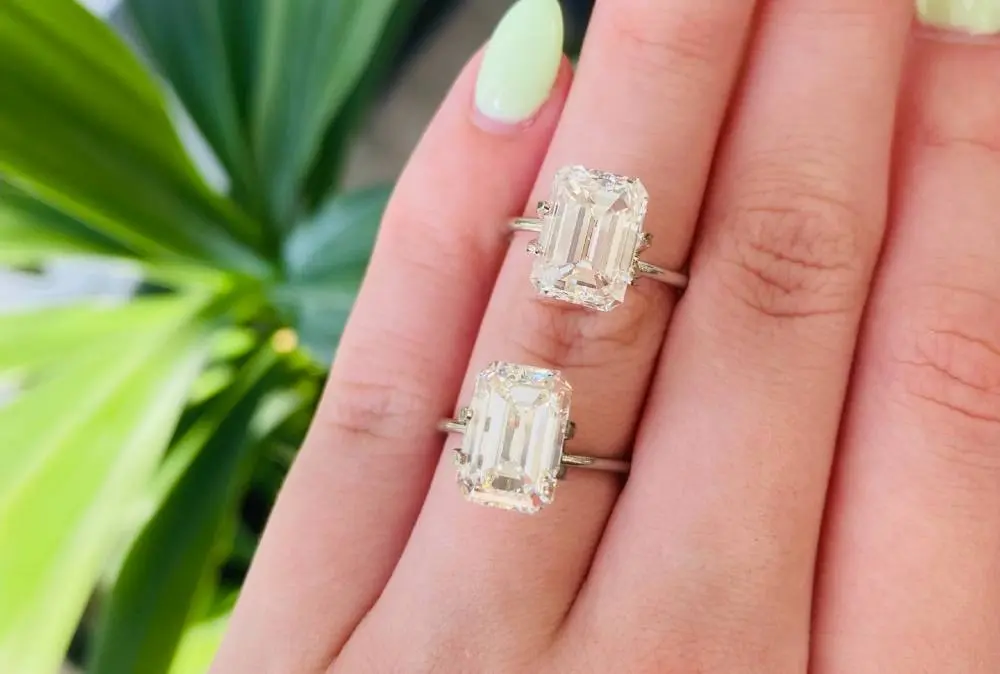An Unbiased View of Engagement Rings
Table of ContentsEngagement Rings Things To Know Before You Get ThisGetting The Engagement Rings To WorkThe Ultimate Guide To Engagement RingsEngagement Rings Can Be Fun For Anyone7 Simple Techniques For Engagement RingsMore About Engagement Rings
Tension-style setups likewise offer better safety and security for the gemstone. A lot of tension-style settings are created rounded brilliant diamonds or various other rounded gemstones, but they can be customized to fit numerous various other shapes. The setting can also be changed to have accent gems around the centre rock or to enable a side rock on each side of the centre stone.Creates an optical impression of the centre gemstone hanging in the air. If it has prongs, they can become loose with wear. This is easily corrected by having the ring on a regular basis cleaned up and checked by a jeweller.
What Does Engagement Rings Mean?
The first ring with a real tension setting was made in Vreden, Germany in the 1970s. Ursula Exner and well-known carver Walter Wittek worked with each other to layout and make this initial ring. In the complying with years, other jewelers created their own tension setups, as well as the much more safe and secure and useful tension-style setups.
This gives the ring a simple, yet elegant charm that works well for both males and ladies's wedding rings, as well as involvement rings. The flush setup is in some cases likewise called a gypsy setting. We can not claim for certain exactly how it came to have that name, yet probably it is due to the fact that the setup stands for a complimentary spirit.
Getting The Engagement Rings To Work
Flush settings function well for round, square or rectangle-shaped gems, yet they can be tough to adjust to certain expensive cuts, for example, a heart-shaped diamond. Keeps the gemstones secure and safe and secure.
Typically unwise for heart-shaped gems and a few various other gems with fancy cuts. Rings with flush or gypsy setups have actually been around given that the late 1800s.
Jewelry involvement rings have just one centre gems on a simple band. Several various other interaction rings, however, likewise have accent gems. Accent gems can be diamonds or a variety of various other gemstones. They typically range in size from little to modest and are established close together. Accent gems are included to involvement rings especially to increase brilliance and sparkle.
6 Easy Facts About Engagement Rings Shown
There are 4 settings that are extensively Your Domain Name utilized to hold accent gems. The castle setting gained its name because from the side it looks like the battlements on top of a castle wall. This setup is also often called the Continued scallop setup. Castle settings are made straight on the shank of the ring.
The prongs in a castle setup can be directly and down with basic spherical suggestions or they can be reduced at an angle to ensure that they appear like fishtails. These fishtail prongs can also be called French cut prongs. Castle settings are really versatile. They can be set entirely around the shank, just placed throughout the ring's shoulders or made use of to produce a halo around the centre gems.
3 Easy Facts About Engagement Rings Described
The metal sides of the castle setup are constantly cut low, generally in a scallop pattern. This permits more light to reach the accent gems and increases their brilliance. If it is well made, the low scalloped edge of the castle setup can also produce an optical impression. It permits the sides of the gemstones to be conveniently seen and develops the impression that the gems are being held in an unnoticeable setting.
Develops the illusion of an invisible setup. The little prongs can become loosened. We recommend that rings with the castle setup be cleaned periodically by a jeweller, Click Here so that the prongs can be examined.
The prongs on a castle setup can catch on garments, but this is uncommon since the prongs are smooth. The castle setup can be utilized to make lovely eternity rings. The initial infinity rings were designed in the 1960s. Those initial rings, like endless time rings today, have a row of carefully set gems completely surrounding their shank.

An Unbiased View of Engagement Rings
The grain setting is a really protected setup. The sides of the channel protect the accent treasures from bumps and scratches and the handmade prongs seldom become loose. One downside of the grain setting is that the gems get less light due to the fact that they are established down in the channel. This results in the treasures generating somewhat less brilliance and sparkle.
Every treasure in the bead setup is surrounded by 4 glossy beads that are level with the top of the shank. These grains capture the light and produce their own shimmers in every instructions. The beads' shimmers with each other with the sparkle and glows created by the accent gems bring the bead setting to life and provide it constant shimmers.
They can use it to make eternity rings, as well as to decorate the simple shank or even more detailed split shank that some involvement rings have. In the standard grain setting, the accent treasures are set in one straight line. Sometimes, though, jewellers will certainly boost the shimmer on an involvement ring by adding two or even more parallel lines of bead set gems.